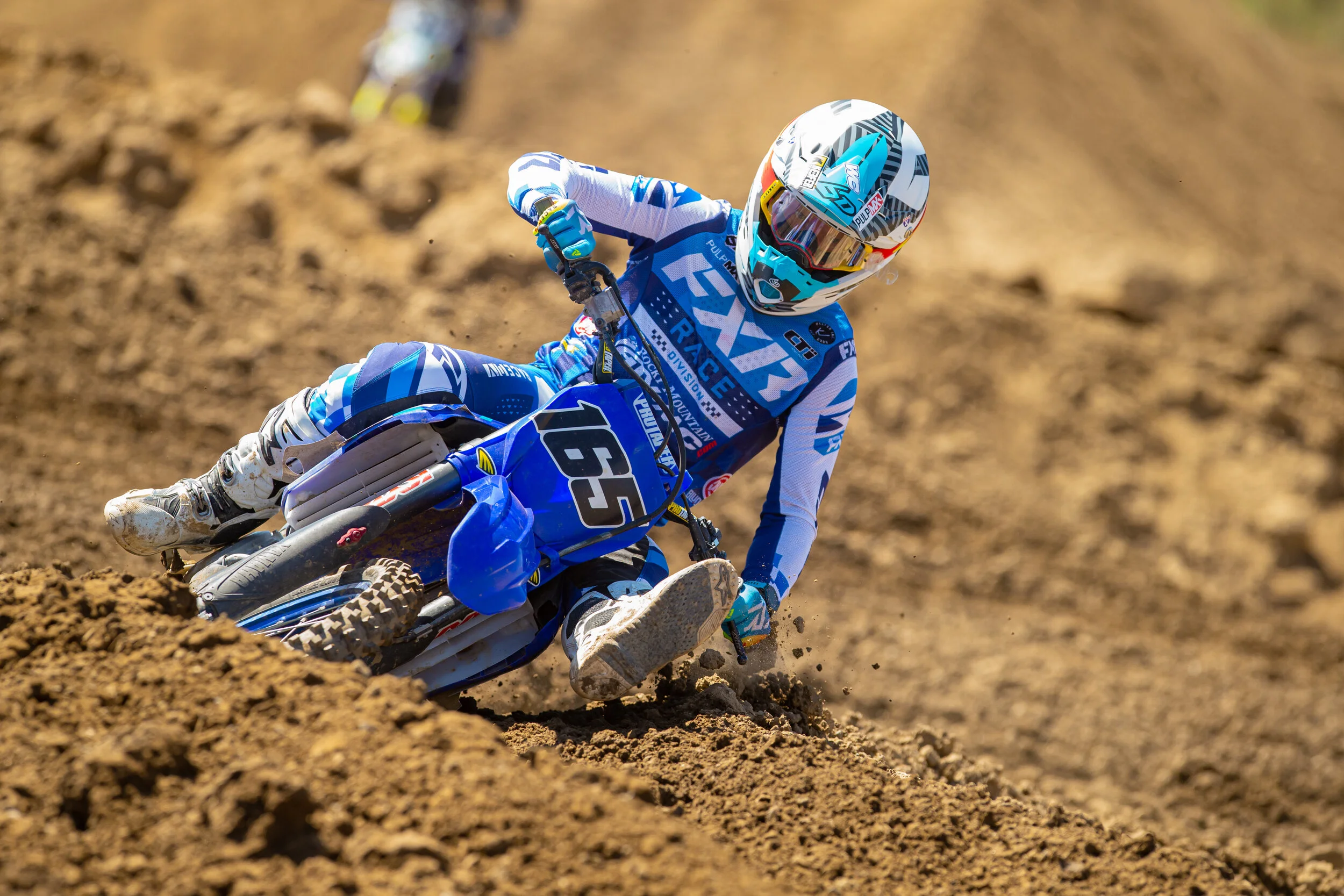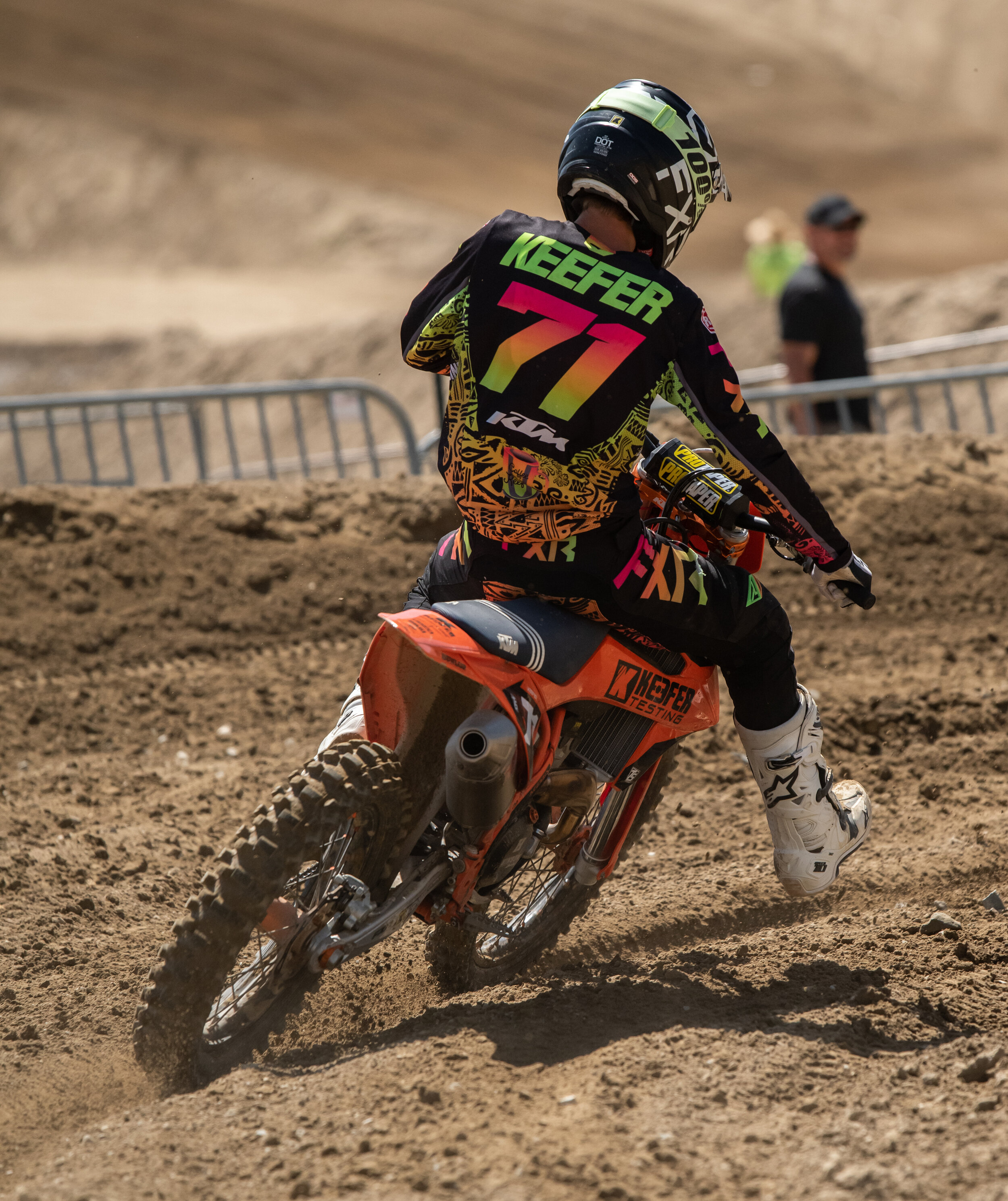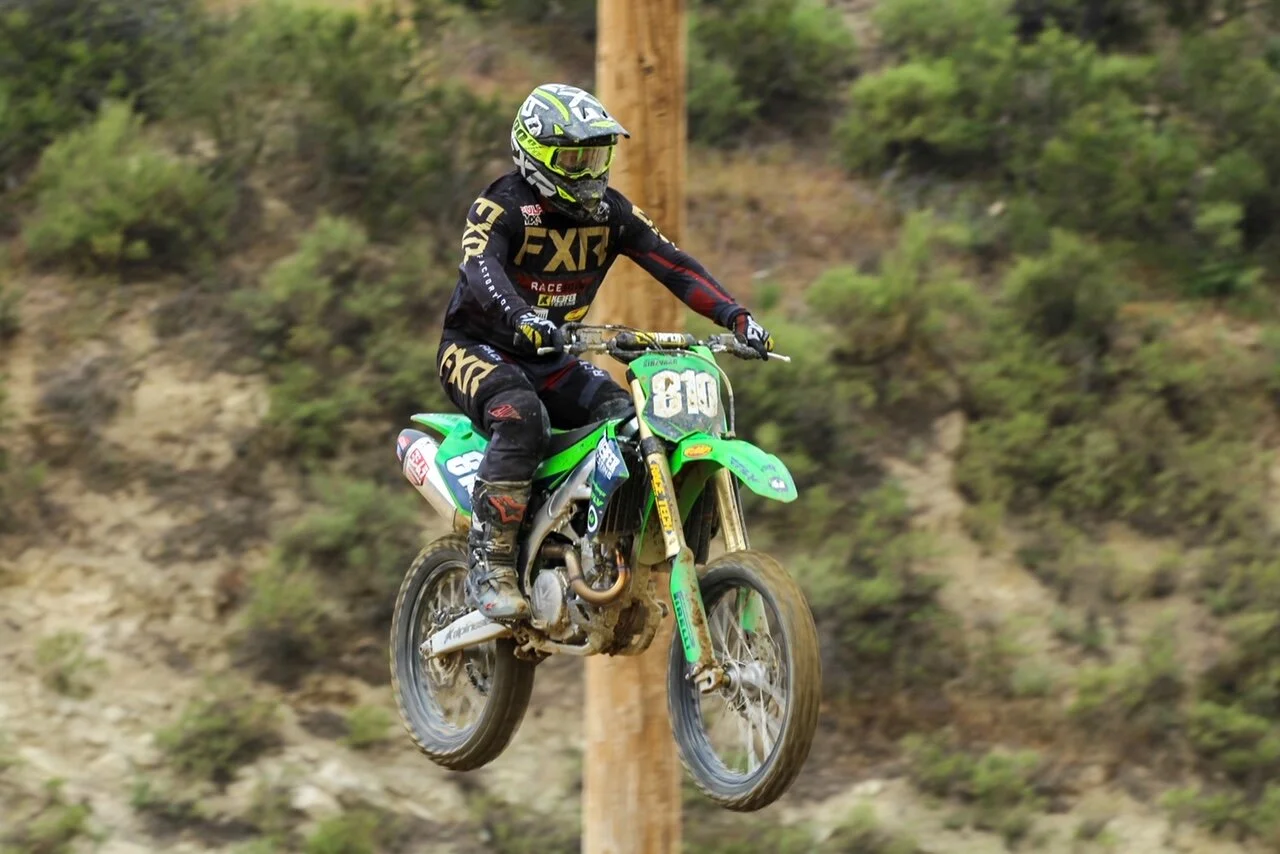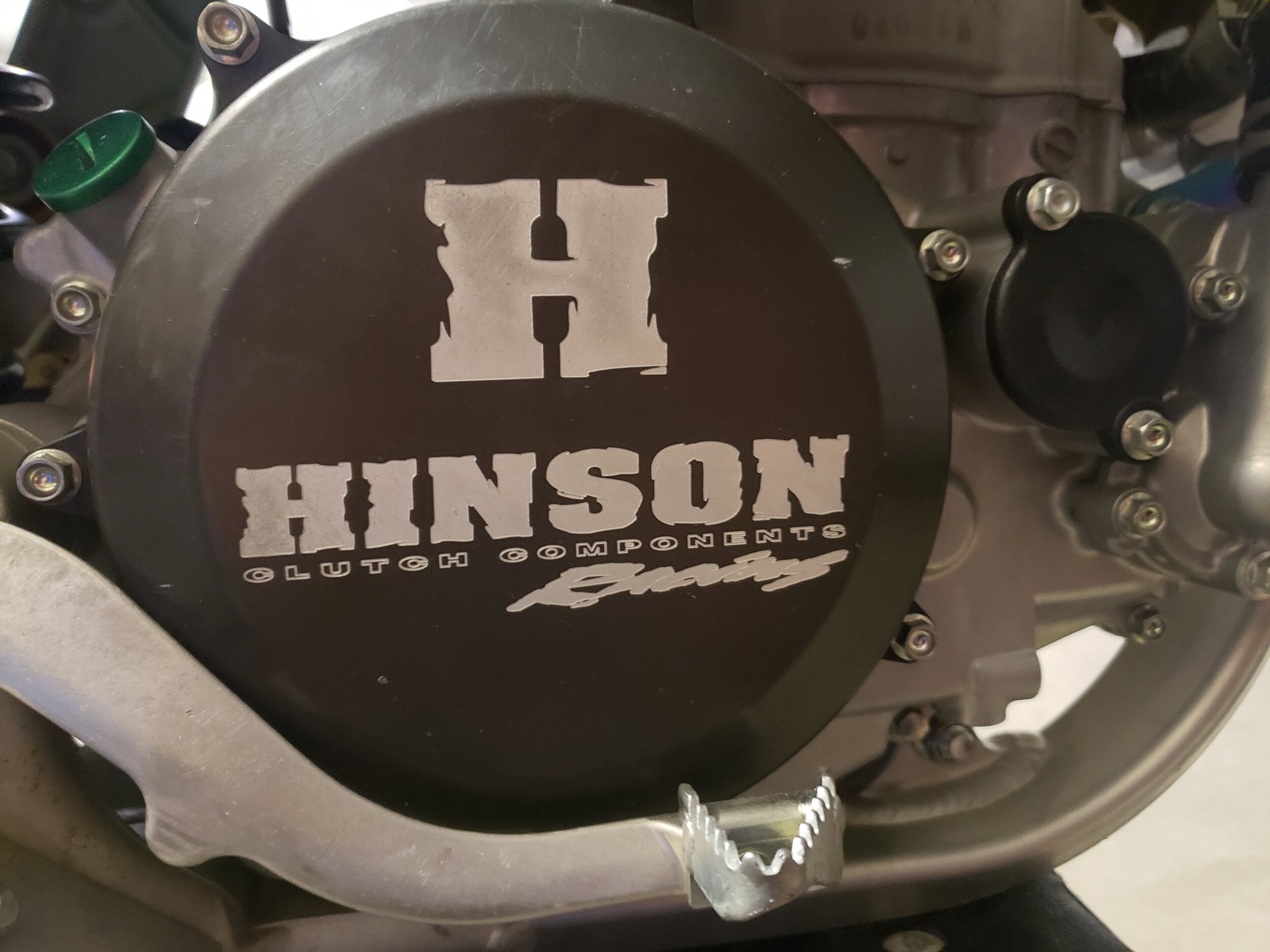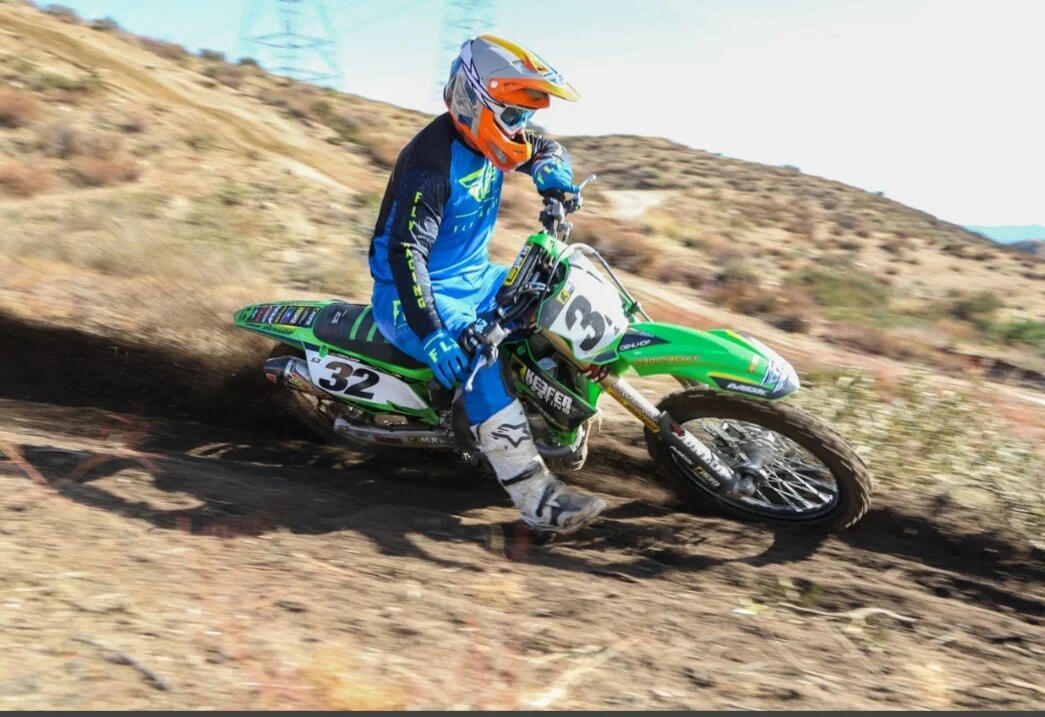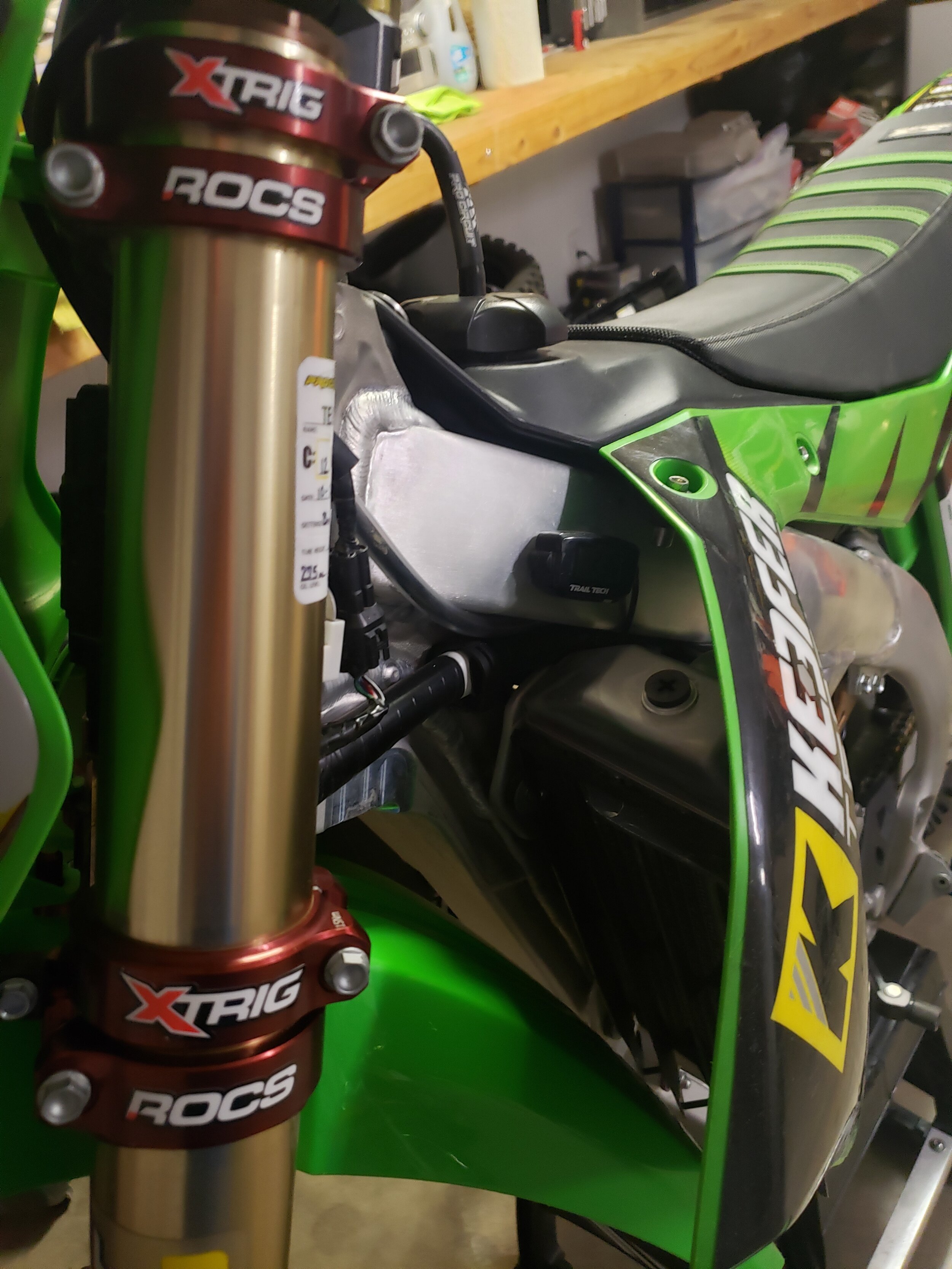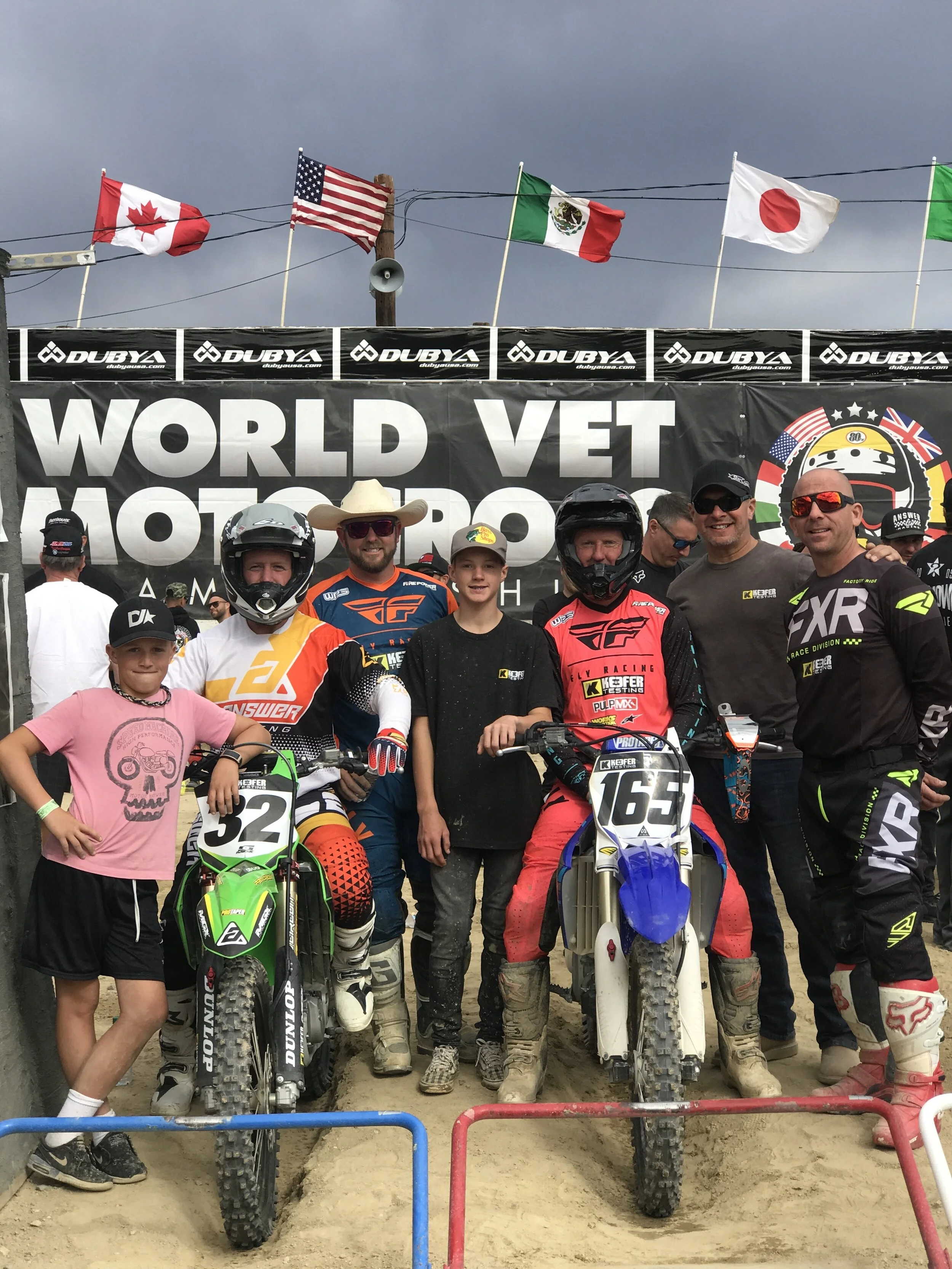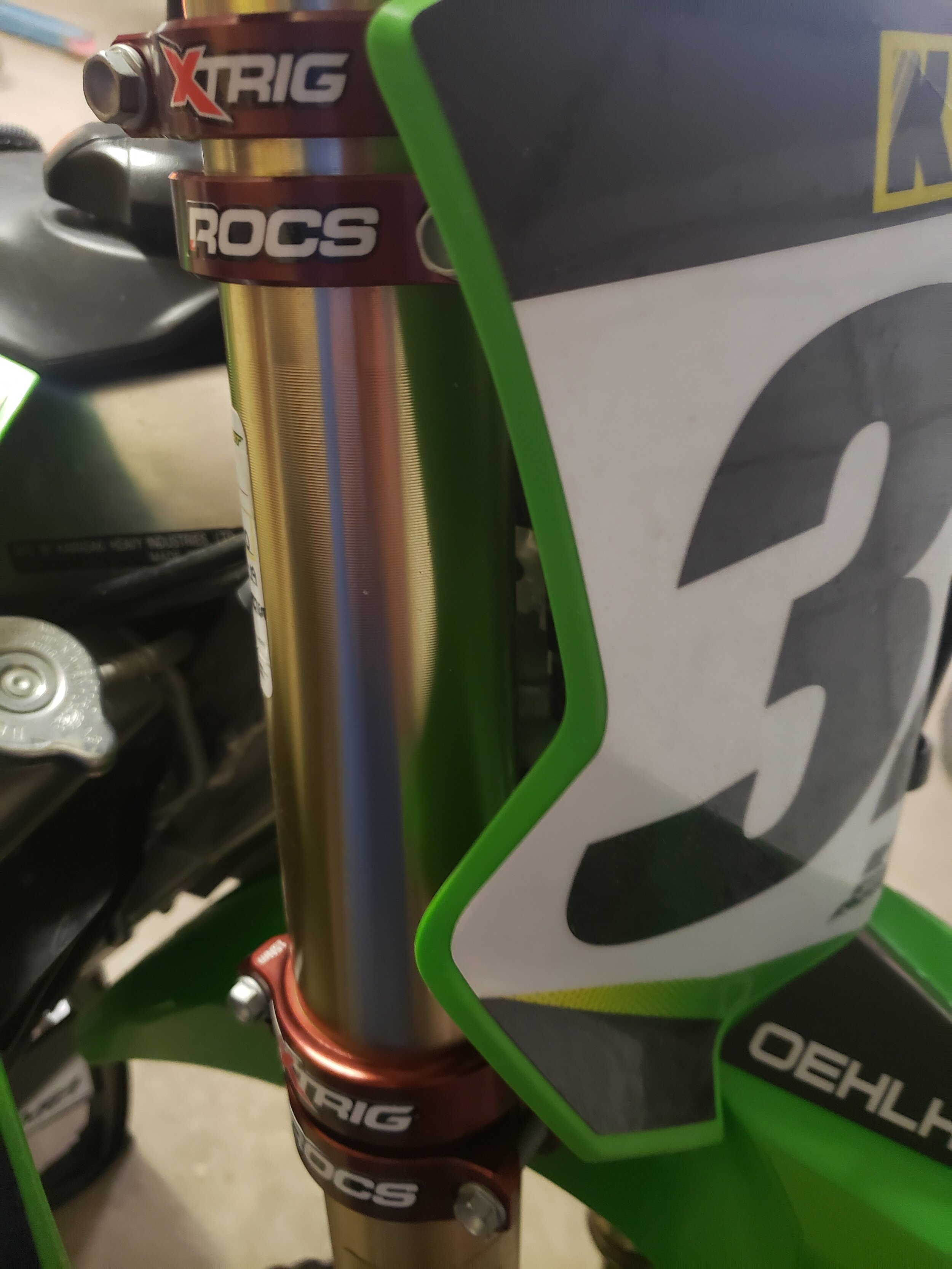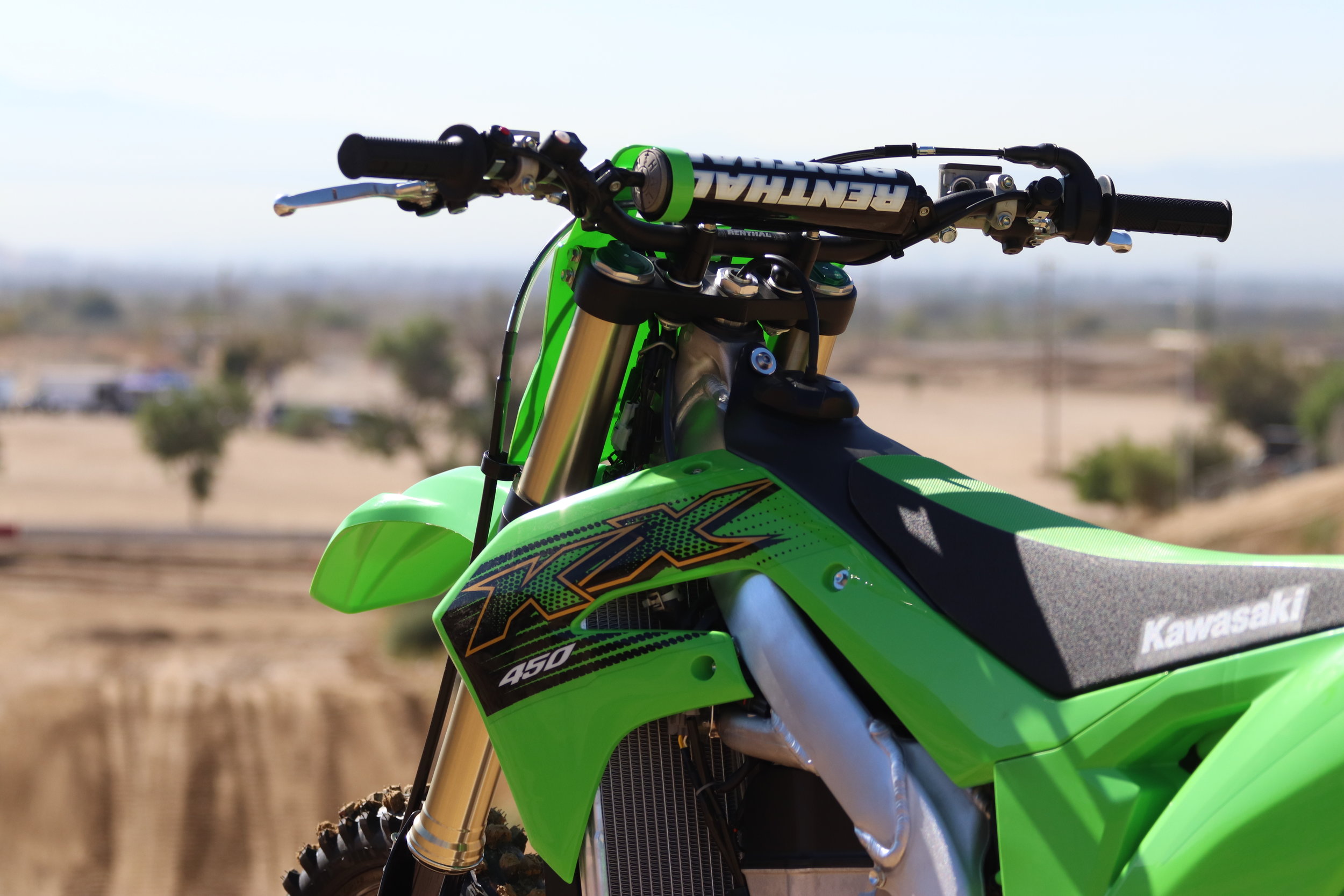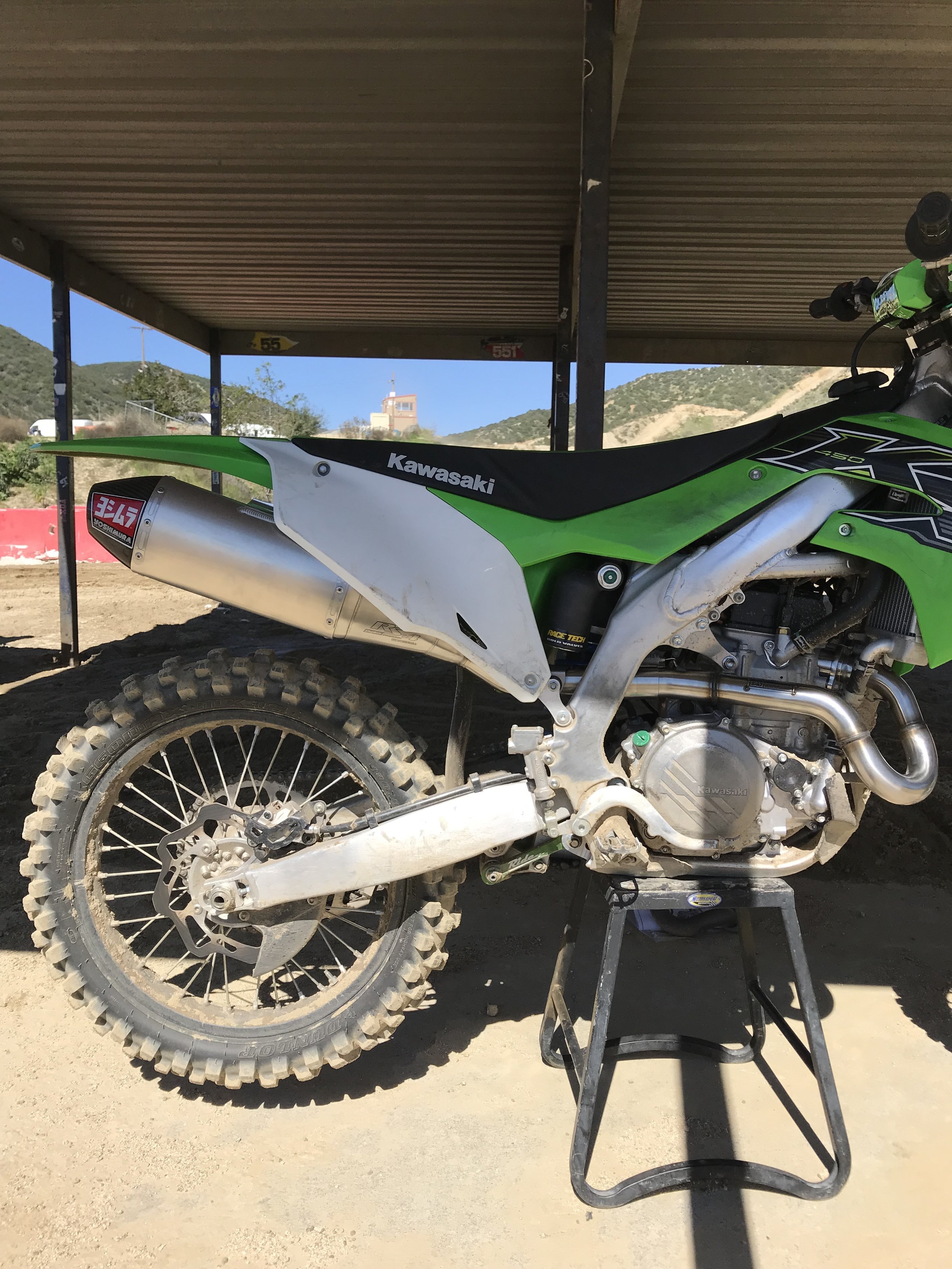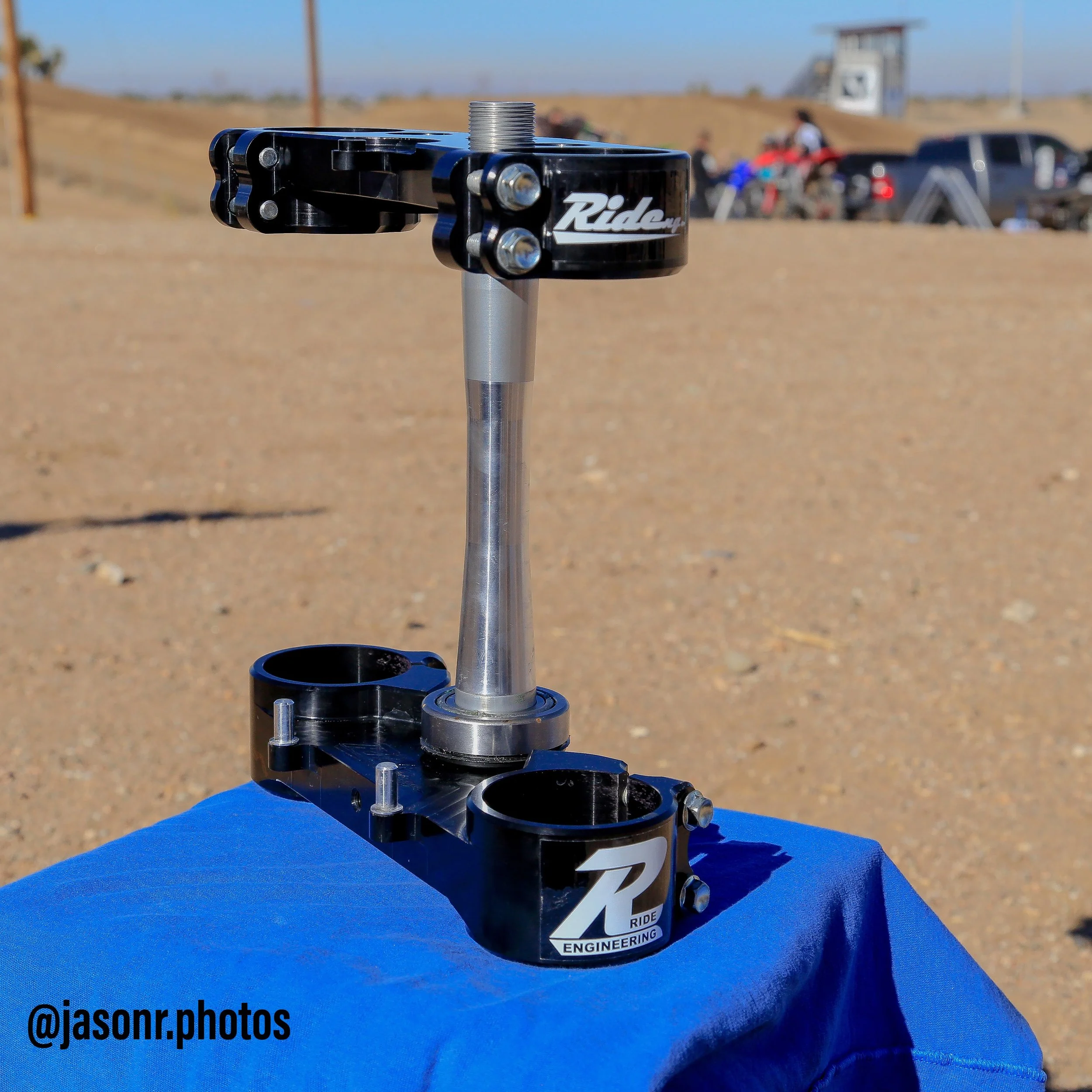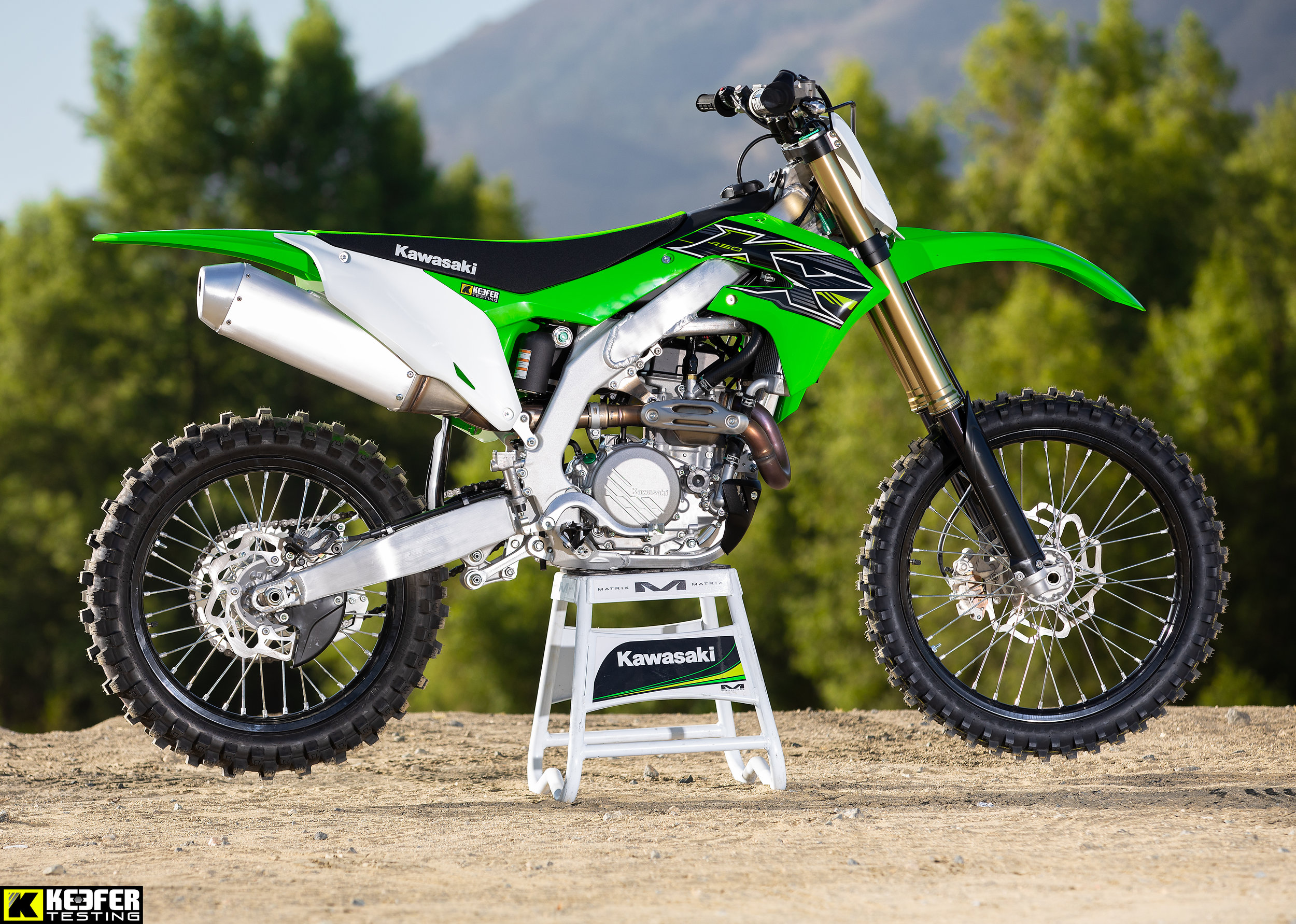I always thought it would be cool to share the notes that I create after a race with the reader. 98% of the time I will input notes about each test bike/part I decide to race any given weekend. The part as well as the bikes change from time to time, but I always like to have a log of what I ran as well as the conditions of each race. Below is a brief breakdown on the bikes, parts as well as notes on how each performed or felt. Last weekend we brought four bikes to race (2021 Yamaha YZ450F, KTM 250 SX-F, Kawasaki KX450, Yamaha YZ450FX). Below are four breakdowns of what was on each machine and how each machine fared in race conditions. Each time my son and I race, you can check back here to keeferinctesting.com every Tuesday (when we race the previous weekend) for “The Weekend Race Set Up”.
Track: Glen Helen Raceway
Kris Keefer
Terrain: Sandy top soil AM with hard pack in PM
Start: Dirt
Avg Lap Time: 2:00
Total Number Of Motos: 4 motos (Four 8 lap motos)
Weight At Time Of Race: 170 pounds w/o gear
2021 Yamaha YZ450F:
Engine Hours 50.2
Tires: Dunlop MX3S/MX12 13.5/12.5 PSI
Bars: Pro Taper SX Race Evo
Grips: Renthal Half Waffle Medium
Levers: ARC RC-8 Perch/Lever
Throttle: ZRT
Rider Triangle: -5mm down and back peg position/stock bar height/rear hole
Gearing: 13/49 Renthal Sprockets/DID ERT3 Chain
Engine Mods: Vortex ECU Mapped By XPR/Akrapovic Evolution System
Engine Oil: Blud Racing 10/40 Pro Series
Fuel: Renegade SX4
Holeshot Device: WC
Graphics/Seat: Throttle Syndicate
Suspension: Enzo Racing Test Fork/Shock Spec #KK145
Air Filter: Twin Air Power Flow Kit
Plastic: Cycra Power Flow Kit
Results: 1st 450 Pro (1-1-1), 2nd 30 Pro (2-2)
Notes:
• GH World Vet Vortex ECU setting as well as Akrapovic muffler allowed the most rear wheel connection I have felt yet from any muffler I have tested to date. Power was controlled and easy to manage late in motos.
• YZ450F feels slightly heavy on entry of shallow ruts.
• PSF1 Fork was stiffened up to 38.5 PSI to help with hold up coming down hills. PSF1 had more comfort on heavy landings or when pushing hard into corners. lean angle is not as good as spring fork, but PSF1 setting allowed me to push harder later in the day. Surprising!
• Shock sag at 105mm made for acceptable balance, but left rebound setting from 4/10/21 race to compensate for choppy conditions so rear can follow ground more.
• WC start device was better off the gate when set at 120mm for dirt start.
• Updated rider triangle (-5mm/-10 back pegs) allows for less leg fatigue. Legs were fresher at end of motos.
• GUTS standard seat foam is firmer than stock OEM foam and last longer. (12.1 hours on foam and density still holding up).
TP199 knee pads were worn. Had more mobility when riding, less fatigue and overall movement on bike was more fluid. Roost protection was adequate. Still slip down legs so Asterisk Zero G Knee Brace Pant was worn.
Suspension Setting:
Fork: (Spec #KK28PSF1)
Air Pressure: 38.5
C: 15
R: 11
Height: 2mm
Shock: (Spec #KK144S)
LSC: 10
HSC: 1.25
R: 9
Sag: 105mm
Track: Glen Helen Raceway
Aden Keefer
Terrain: Sandy top soil AM with hard pack in PM
Start: Dirt
Avg Lap Time: 2:02
Total Number Of Motos: 4 motos (Four 7 lap motos)
Weight At Time Of Race: 130 pounds w/o gear
2021 KTM 250 SX-F:
Engine Hours 10.1
Tires: Dunlop MX3S/MX12 13.5/12.5 PSI
Bars: Pro Taper Evo Suzuki Race Team Cut to 805mm
Grips: Pro Taper 1/3 Waffle Race Cut
Levers: Stock
Throttle: ZRT Grey Cam
Rider Triangle: Stock
Gearing: 14/51 Sunstar Sprockets/DID ERT3 Chain
Engine Mods: Head Mod XPR Motorsports, Custom HC Piston, Vortex ECU Mapped By XPR/HGS Full System
Engine Oil: Blud Racing 10/40 Pro Series
Fuel: Renegade SX4+
Holeshot Device: WC
Graphics/Seat: Throttle Syndicate
Suspension: REP Racing Test Fork/Shock Spec #AK3
Air Filter: Twin Air Power Flow Kit
Results: 2nd 250 Intermediate, 2nd Schoolboy
Notes:
• REP AER setting was set at 9.92, but rider still complaining of soft feeling (dive) under braking.
• Fork comfort on bigger braking bumps was ok, but rider needs more performance (hold up) coming down hills or when over jumping jumps.
• Fork comfort on small/light bump/accel was acceptable.
• HGS Muffler provided more hit down low and better throttle response than Akrapovic slip on. 3 out of 4 hole shots with HGS versus 2 out of 4 on the Akra.
• 120mm holeshot device setting remained from last race and is preferred.
Suspension Setting:
Fork: (Spec #AK3F)
C: 11
R: 12
Height: 5mm
Air: 9.92 Bar
Shock: (Spec #AK3S)
LSC: 14
HSC: 1.5
R: 12
Sag: 105mm
Track: Glen Helen Raceway
Michael Allen
Terrain: Sandy top soil AM with hard pack, square edge braking bumps in PM
Start: Dirt
Avg Lap Time: 2:10
Total Number Of Motos: 4 motos (Four 5 lap motos)
Weight At Time Of Race: 175 pounds w/o gear
2021 Yamaha YZ450FX:
Engine Hours 2.3
Tires: Dunlop MX33F/MX33 13/12.5 PSI
Bars: Stock
Grips: Stock
Levers: Stock
Throttle: Stock
Rider Triangle: Stock bar height/front hole
Gearing: Stock 13/50
Engine Mods: Stock
Engine Oil: Yamalube 10/40
Fuel: Pump 91
Holeshot Device: none
Graphics/Seat: stock
Suspension: stock, sag at 104mm
Air Filter: stock
Plastic: stock
Results: 9th Open Vet Int., 4th 30 Plus Int.
Notes:
• Front end pushed and lacked traction in corners, especially flat corners.
• Took a lot of effort to get leaned into a rut and wasn’t planted in rut.
• Stock map has too much power/hit for rough Glen Helen when accelerating up the choppy hills or out off choppy corners
• I started the race in the stock map and changed to the hard packed map just before the second corner.
• The hard packed map mellowed out power delivery in first 5-10% of throttle opening, as well as making the overall power, less “explosive”
• Fork and shock settings were in the ball park for comfort for my height/ability (30+B rider)
• Big improvement over previous year settings as its much less wollowy overall.
• The fork is slightly firmer than the rear, as once the shock gets deeper in the stroke the wollowy characteristics can still be slightly felt from last year.
• Even with the longer exhaust, it’s still on the loud side
I’m used to riding a 250F, so the 450FX definitely wore me out, but in a different way. On a 250F I get worn out from riding it aggressively, but on the 450FX I get more worn out form holding on during acceleration (especially up hills). This was my first time riding this bike, so after a 10 minute practice session my first experience was moto one. I got one hole shot, and wasn’t ever outside the top 5. I think one reason I had trouble turning the bike is because the bars were in the forward position as I usually have YZ’s in the rear position. Will be moving mounts to the rear hole from here on out.
Suspension Setting:
Fork: (stock)
C: 10
R: 8
Height: 5mm
Shock: (stock)
LSC: 10
HSC: 1.25
R: 7
Sag: 104mm
Track: Glen Helen Raceway
Matthew Sirevaag
Terrain: Sandy top soil AM with hard pack in PM
Start: Dirt
Avg Lap Time: 2:15
Total Number Of Motos: 4 motos (Four 7 lap motos)
Weight At Time Of Race: 201 pounds w/o gear
2021 Kawasaki KX450:
Engine Hours 41.6
Mods/Parts:
Tires: Dunlop MX33F/MX33 13.5/13.5 PSI
Bars: Pro Taper Fuzion SX Race
Grips: Pro Taper Half Waffle Soft
Levers: Stock
Rider Triangle: Stock peg position/stock bar height/rear hole
Gearing: 13/48 Pro Taper Sprockets/DID ERT3 Chain
Engine Mods: Yoshimura RS12 stainless system
Engine Oil: Blud Racing 10/40 Pro Series
Fuel: Pump 91
Holeshot Device: None
Graphics: 180 Decals
Suspension: Race Tech re-valve/5.2 fork springs 5.8 rear spring
Air Filter: Stock
Plastic: Stock
Results: 30B (6-7= 7th), Open Vet = sucked both motos
Notes:
• Regret not installing Works Connection hole shot device three out of the four starts were horrible
• KX450 has light nimble feel making it easy to change direction mid corner
• Yosh exahaust system smoothed out power down low which helped me to roll my corners with more speed. Less jerky feel.
Went from stock 13/49 gearing to 13/48 to help smooth power out in order to help with rider fatiuge late in motos.
Fork seemed a little harsh in mid stroke, so opening up rebound helped some coming down rough hills. I still need more comfort in order for me to be able to charge harder late in Motos.
Shock gave me good comfort/traction, but need to balance the fork to match the shock’s comfort on throttle.
Suspension Setting:
Fork:
C: 12
R: 15
Height: 2mm
Shock:
LSC: 13
HSC: 1 3/4
R: 16
Sag: 105mm

